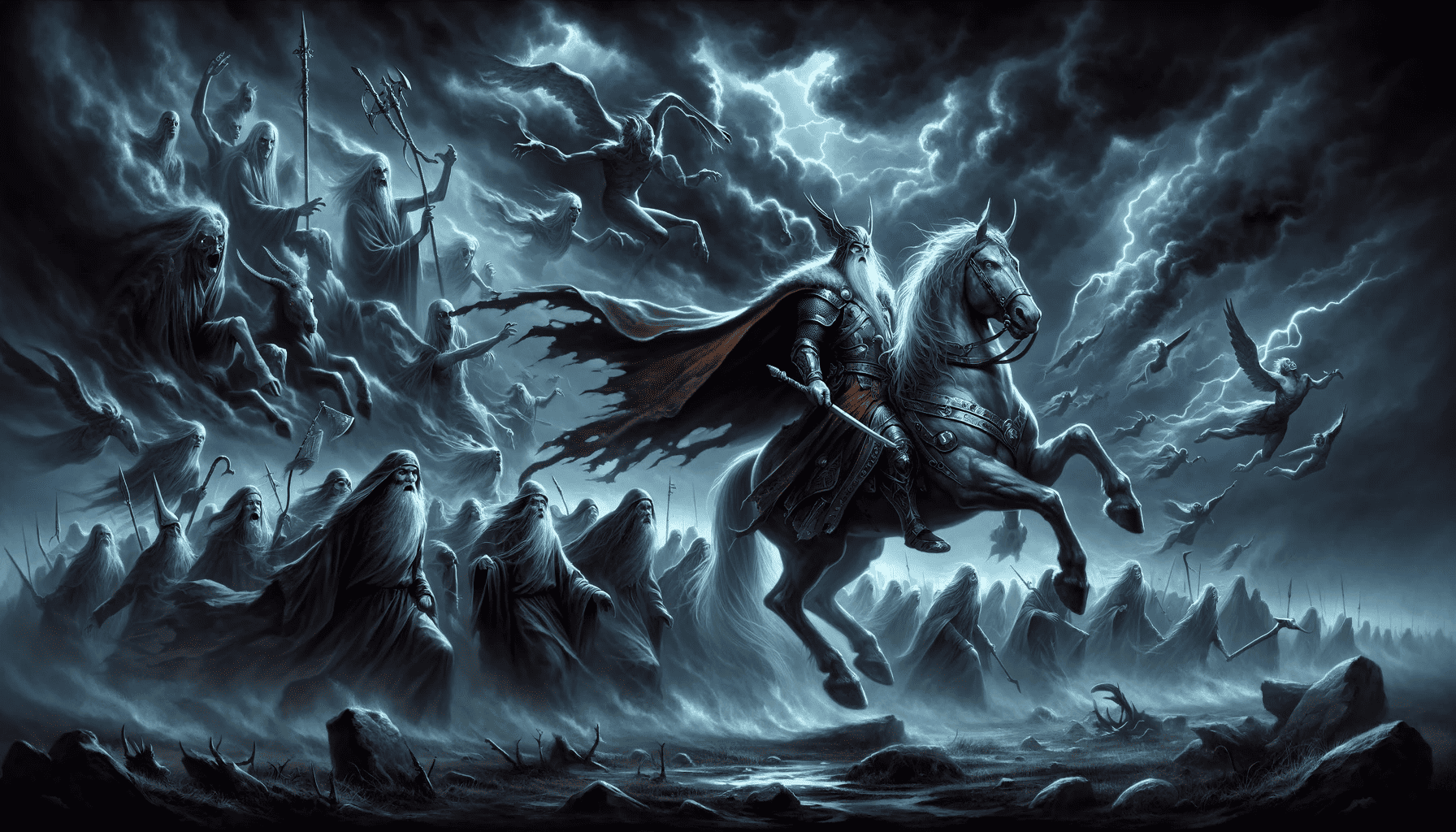Yule is a festival deeply rooted in ancient winter solstice traditions. It intertwines numerous pieces of folklore and myth — and one of these myths is the thrilling legend of the Wild Hunt. The Wild Hunt is a kind of haunted hunting party riding on the night sky. This myth, steeped in European folklore, goes back to the Norse god Odin and the Vikings. But the connection between Yule and the Wild Hunt goes even further.

The Origins of Yule: Celebrating the Winter Solstice
Yule originates in pre-Christian times. It marks the celebration of the winter solstice, the shortest day and longest night of the year. This pivotal moment in the solar calendar has been recognized and revered by various cultures for millennia. The Norse and Germanic peoples, in particular, celebrated Yule with great fervor during midwinter.
They marked the event with feasts, storytelling, and rituals that symbolized the death and rebirth of the sun. A great fire would be lit to help “fuel” the sun. If the sun was greeted with fire, then it would have the power to return after the winter is over.
Yule customs were numerous and varied. Bonfires, akin to a larger version of a hearth’s fire, were a common sight, symbolizing the return of light and warmth. The Yule log, a specially chosen and decorated ingredient for these grand hearths, was burnt during these celebrations. Its embers were kept to light the next year’s log, ensuring continuity and protection.
This is where the ghosts of the Wild Hunt also come in.
In Norse mythology, Yule was closely associated with the gods Odin and Thor. Odin, the Allfather of the Norse pantheon, was believed to lead the Wild Hunt, a ghostly procession through the sky, astride his mighty horse Sleipnir. During this spectral parade, Odin, accompanied by ghostly men and animals, took to the air in an event that was not only awe-inspiring but also fraught with superstition and fear.
Although sometimes Odin is regarded as a gift giver, these were not kind figures. If you would see the Wild Hunt, it was not good. These beings were considered an omen of impending catastrophes such as war or plague.
The Wild Hunt spread, in one form or another, to multiple cultures. In fact, the Wild Hunt has become an important element in several parts of European folklore.
The Legend of the Wild Hunt

Multiple cultural variations of the Wild Hunt emerged (as you can see, for instance, in the Witcher series), but the common theme remained the same.
The Wild Hunt is a nocturnal procession of ghostly riders in the sky. It includes phantom horses and horsemen, led by a charismatic yet fearsome figure. Like the winds of midwinter storms, the Wild Hunt swept through the air, adding more awe and mysticism to the Yuletide season. It was more than a myth; it was a socio-cultural phenomenon that encapsulated the fears and beliefs of the people.
Across Europe, the Wild Hunt held different names and nuances. Each variation, such as Woden’s Hunt in Germany and Herne the Hunter or King Arthur in Britain, reflected the local culture and landscape. Each one had its unique connection to the event, making the Wild Hunt a diverse yet universally recognized legend even during the Yuletide period.
In time, the Wild Hunt took on various forms. It became associated with iconic kings and warriors, and it became a widespread display of supernatural magic.
In fact, its impact also spilled into Christianity.
The Evolution of Yule and the Wild Hunt in Modern Times
With the advent of Christianity, Yule and the Wild Hunt underwent significant transformations. Yule was gradually incorporated into Christmas celebrations, with many of its customs, such as the Yule log, adapting to fit Christian symbolism.
The Christianization of Europe saw the rebranding of Yule as a celebration of Christ’s birth. However, many pagan customs persisted, seamlessly blending with Christian traditions. The Wild Hunt, too, adapted, with its more ominous aspects softened or reinterpreted to align with Christian teachings.
Today, the legacy of Yule and the Wild Hunt lives on in various forms. The imagery of the Wild Hunt continues to inspire literature, art, and media, reflecting the enduring fascination with these ancient traditions.
In essence, Yule and the Wild Hunt are more than just historical curiosities; they are living traditions that continue to evolve, adapt, and inspire. As we gather around our modern hearths and celebrate the winter season, we are partaking in a legacy that has been passed down through generations, a testament to the resilience and adaptability of human culture and belief.






